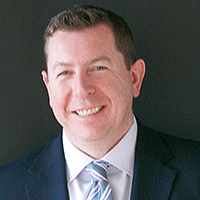 By Eric Demers, CEO, Madaket Health
By Eric Demers, CEO, Madaket Health
Twitter: @MadaketHealth
In the quest to make administrative work automated, payers and intermediaries for years have been developing their own homegrown systems to get closer to fully electronic processes for provider data management (PDM) and revenue cycle management (RCM). While these solutions have been a welcomed relief from shuffling papers back and forth (fax machines should have no place in healthcare anymore), in reality they are only partial solutions — band-aids covering an internal wound.
The biggest issue with homegrown approaches is that they aren’t cross-functional. They only solve challenges for one or a handful of organizations.
Our healthcare system is an ecosystem, and we should treat it as such. What one organization does can affect others. When it comes to provider data management, it’s time to move closer to an agnostic, industrywide solution to bring stakeholders together and provide transparency, and inherently efficiency, in administrative processes.
The Challenge of Homegrown Solutions
A recent KLAS and Center for Connected Medicine (CCM) survey revealed that providers believe RCM processes, which often incorporate provider data management, are in need of disruption and innovation. The source of their frustration? Fragmented technology.
Most homegrown solutions, at the time they were built, were innovative. Payer portals. Clearinghouse internal software. Vendor add-ons. They were all steps in the right direction toward a fully digital and automated RCM ecosystem.
But as innovations go, the industry has now outgrown those homegrown systems. These approaches have only solved problems for a few organizations at a time. With more than 900 payers and over one million active physicians today, clusters of innovation only serve to create more silos than solutions.
Bringing an Industry Together
Some of the arguments for homegrown solutions to PDM and RCM processes are that different organizations need different things. For example, payers have varying rules about how they accept data. They also tend to store provider data in relation to internal information like which network a provider is a part of — data a hospital system would not need to store with their own provider data. These portals are designed to capture all of this information in the way that’s best for the organizations that own them. The same holds true for clearinghouses — every organization has their best interest at heart.
To go to the next level of waste elimination on the business side of healthcare, we’re going to need an approach that has the wellbeing of each segment of the industry in mind. A truly innovative solution at this stage must collect provider data continuously from all relevant sources, store it in way that’s accessible and usable for all administrative transactions, and share it freely.
Building Transparency and Trust
Probably the single most important benefit of an industrywide solution to PDM and RCM is organization-agnostic transparency. When payers, intermediaries and providers alike can take advantage of the same PDM solution, it levels the playing field. No more sending data into the black box of a payer portal and having to make phone calls to check on status of a transaction. A truly integrated, automated system will be able to show the journey of the data, eliminating the time delays of status checks and other manual work.
An industrywide solution would also eliminate duplicate data that exists in the silos of homegrown solutions. Currently, when a provider needs to update any bit of information, let’s say an address for a newly acquired office, that update has to be done with all 20-or-so payers that the provider works with, and for each clinician that works at the new office. With an industrywide solution, those data updates would be made once in a centralized database and automatically show in the records that all parties (payers, MSOs, clearinghouses, etc.) have access to. No more playing telephone with data. And we all know what happens in telephone.
Perhaps, we should take a page from CMS’ book with its Provider Enrollment, Chain, and Ownership System (PECOS). Though not a perfect solution, CMS’ PECOS establishes a single database of provider data on the nearly 93% of providers nationwide that accept Medicare. Yes, PECOS has its challenges. But conceptually, it’s the right idea. One database. All access. Regular upkeep. Add some automation and true inter-organizational collaboration, and we’ve got a recipe for success in cutting waste and reallocating time to improving outcomes.
We understand that what we’re suggesting sounds like a utopia. And we won’t go from thousands of homegrown, single-organization solutions to an industrywide solution overnight. But we can work toward it, and the industry has already taken steps in the right direction. We just have to keep moving forward and leave the homegrown solutions behind.
